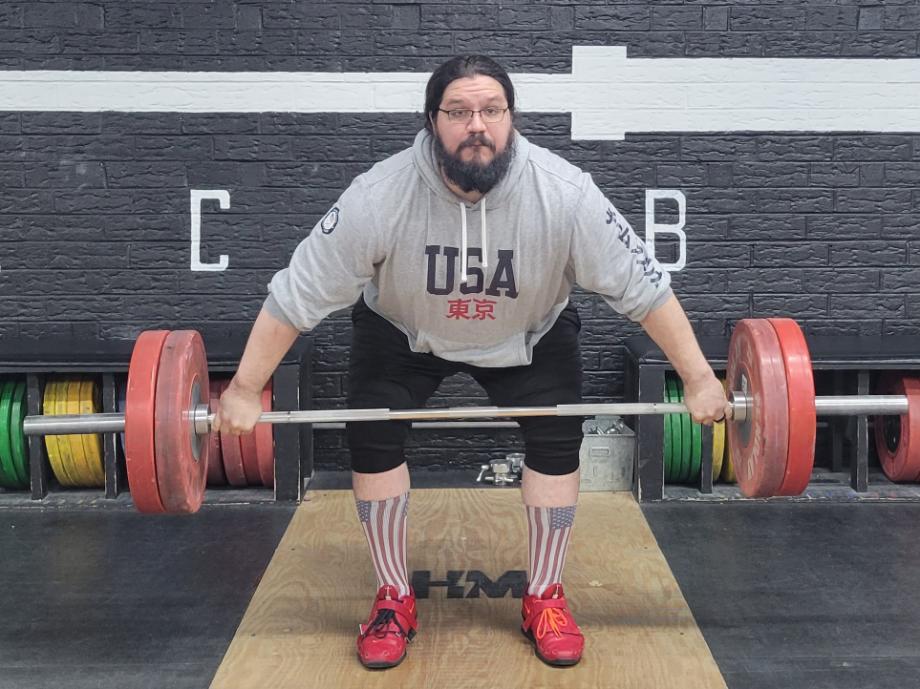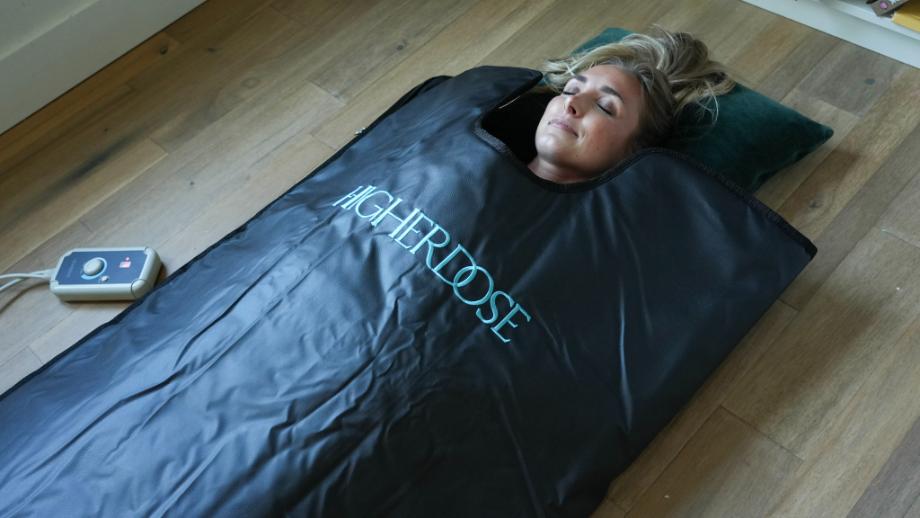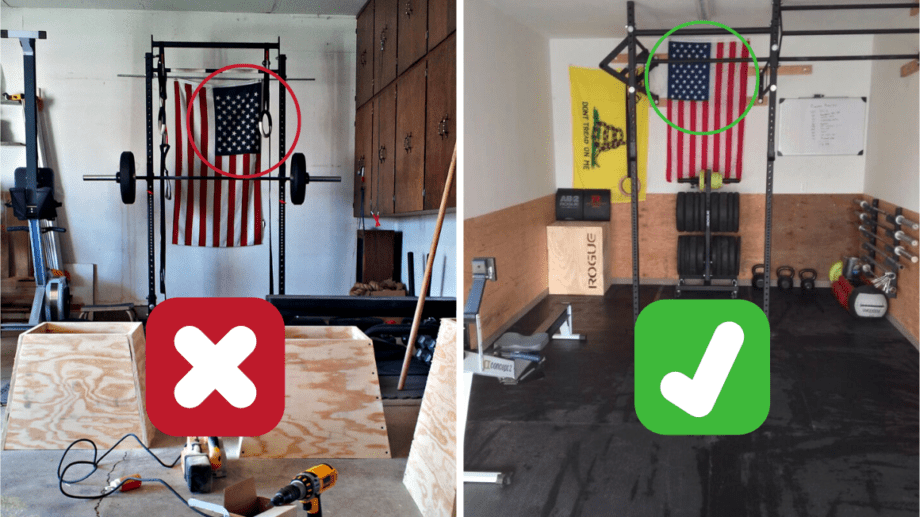While deadlifts are a staple in any strength training program, one lesser-known deadlift variation is the snatch grip deadlift. Unless you’re a competitive weightlifter, like myself, or dabble in some Olympic weightlifting, you probably have kept most of your posterior chain work focused on regular deadlifts.
Nevertheless, there are some benefits to the snatch grip deadlift that you might be missing from a general strength training program. As an internationally competitive athlete for over two decades and a lifting coach for 17 years, I have lots of experience with the snatch grip variation of deadlifts, both in my own training and through coaching and programming for others.
In this how-to tutorial, I’ll break the movement down: how the snatch grip deadlift works, why you should do it, and the benefits a lifter or gym-goer can get from doing them regularly. Grab your best Olympic barbell, and let’s get into it.
How To Snatch Grip Deadlift
- Standing behind an Olympic barbell, place your feet about hip-width underneath the bar, covering the midfoot—or your shoelaces. The barbell should be at your shins.
- Grip the bar with a wide grip; the grip width can vary, but aim for a grip width comparable to the snatch or overhead squat.
- Set your hips just above parallel to the floor, and tighten your back. Although the wider grip width will lower your chest more than a traditional deadlift, try to maintain an upright chest and tight back.
- Drive your legs into the platform, lifting up the bar (and yourself) to lockout, having the hips and shoulders rise at the same time.
- Maintain control at the full extension, pausing for a moment. Then bring the bar back to your starting position, while maintaining a strong core and keeping the bar close on the way down.
- Repeat for reps.
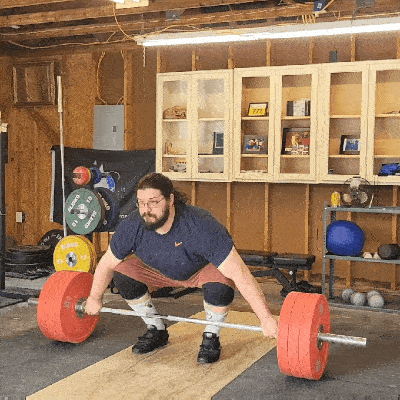
Trainer Tips for Form
The snatch grip deadlift is a bit more involved than simply grabbing a bar with a wide grip and standing up. Here are some coaching cues that I share with lifters that I coach.
Use a Hook Grip
Because of the wide grip width of the snatch grip deadlift, you’ll want to use an overhand grip, instead of the mixed grip of a standard deadlift. However, for the strongest grip, I suggest a hook grip. Instead of gripping the fingers around the bar first and then the thumb over the fingers, you’ll set your thumb on the bar first and then wrap your fingers around your thumb and bar.
In addition to the stronger grip on the bar, the hook grip will help you maintain your form throughout the movement—keeping a proper back angle and close bar path. Olympic lifters often use this grip to keep a tight handle on the bar while doing dynamic lifts like the clean or the snatch exercise. That said, there’s a learning curve to the hook grip; it can take a bit to get used to, since you’re essentially smashing your thumb in between the bar and your fingers.
So if you’re doing this to supplement powerlifting or CrossFit training, you can get away with a standard overhand grip or even use a pair of lifting straps if the focus is less on grip and more on strengthening the glutes, hamstrings, or upper back muscles. However, if your training is for Olympic weightlifting, trust me: Get used to the hook grip as soon as possible.
Maintain a Tight Back and Core
This goes for the deadlift in general, not just the snatch grip deadlift. Because the deadlift is a full-body exercise, you’re not just training muscle groups in your lower body like the quads and hamstrings; you’re also engaging muscles in your upper and lower back: rhomboids, spinal erectors, lats, and more. Because of this, you’ll want to keep your back and core strong throughout the entire range of motion.
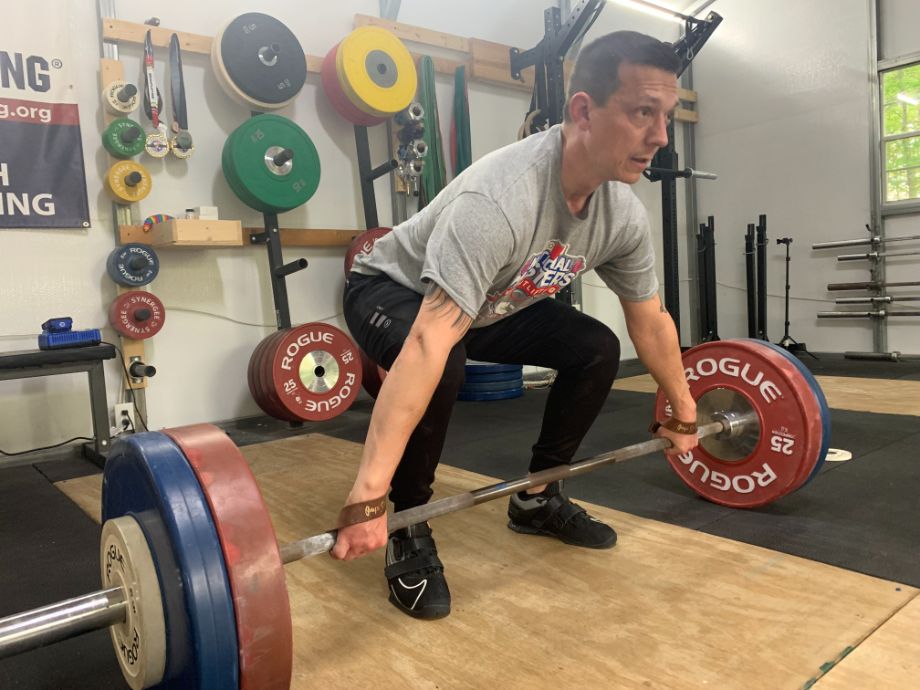
The best way to keep a tight back is to maintain a neutral spine position, not allowing for excessive flexion or hyperextension of the back while performing the movement. I’ve noticed that most athletes only tighten and activate their back muscles when bracing for a deadlift. To properly brace for a deadlift, tighten and engage your abdominal muscles as well.
Rounding the back allows the spine to curve, which can cause significant back issues such as strains, sprains, and bulged or herniated discs1. It’s easier for us to lose our form the closer we get to a one-rep max, so I suggest practicing the snatch grip deadlift with lighter weights first to hone in the strong back positions before ramping up the load.
Keep Your Lats Activated
We don’t often think about the engagement of our upper back during a deadlift, but we’ll want to keep those muscles active and tight throughout the movement. Because the wide grip of the snatch grip deadlift has our chest and back angle start a bit lower than a conventional deadlift, it’s even more important to activate the lats to ensure the bar remains close as you pull the barbell up. Relaxing the lats will let the bar drift forward, and that shift will get us out of position, making the weight feel heavier and increasing the risk of injury.
RELATED: Exercises for Upper Back
Look Ahead
I’m not talking about thinking about the future—although that’s probably a good practice, too. With a snatch grip deadlift, however, we want to keep our gaze forward to help keep the weight balanced and centered during the exercise.
The bar tends to follow where the head goes, because the body will shift with the head. Looking down can drag the bar forward, as well as rounding the spine excessively. Likewise, looking up too high can shift the weight back too much and also hyperextend the neck during a heavy lift. The best route is to look straight ahead to help keep the chest up and your center of gravity balanced.
Snatch Grip Deadlift Benefits
There are several reasons for incorporating snatch grip deadlifts into your workout routine besides adding more variety to your training program.
Improves Grip Strength
The wider grip of the snatch grip deadlift will put you at a disadvantage compared to a clean grip deadlift or a traditional deadlift. A closer grip will allow for a stronger grip and more pulling power. With a snatch grip, the grip is more of a challenge, so it’ll be harder to maintain your grip on the bar. Over time, training this position without lifting straps can help strengthen your forearms and grip.
RELATED: Grip Strength Exercises
Helps Increase Upper Back Strength
Most of the time, we think of the deadlift as mostly training the lower body and posterior chain. Don’t be fooled, though; the deadlift is a full-body workout, and proper form requires the engagement of the upper back: lats, rhomboids, and spinal erectors.
With the snatch grip deadlift in particular, the lower back angle from a wider grip will engage your upper back more so than a regular deadlift, allowing you to get a solid upper back workout, too.
Builds Proper Form for Olympic Lifting
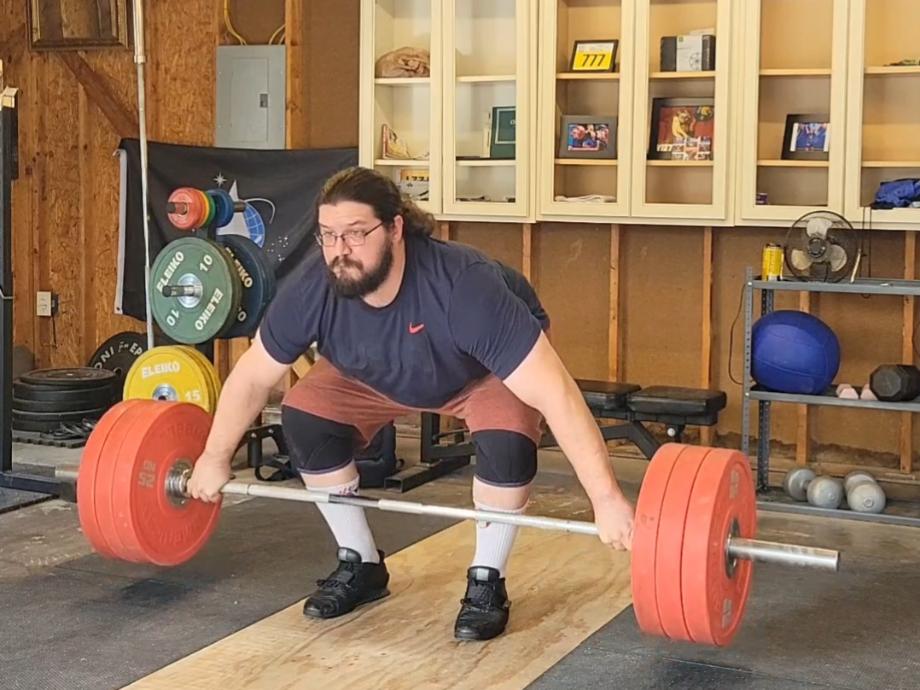
For those training in the Olympic lifts—the snatch and clean and jerk—a snatch grip deadlift helps reinforce proper positions for the snatch pull. Because a deadlift is a slower movement than a snatch or power clean, you’ll be able to move heavier weights and reinforce good positions like a tight, braced core and strong hip hinge in the beginning stages of the pull.
RELATED: Hip Hinge Exercises
Builds Patience Off the Floor
The hair band Guns N’ Roses got it right when they said, “All we need is just a little patience.” The same goes for snatch grip deadlifts, too.
One of the toughest things for a new lifter to learn with deadlifts (or Olympic lifts) is being patient from the floor. Too often, you’ll want to “grip and rip” the barbell off the floor, but this quick liftoff can almost immediately put you out of proper positions, not only putting you at a mechanical disadvantage, but also increasing the likelihood of a back injury.
Starting off the floor, drive through your legs at a patient, steady pace that you’re able to maintain a strong core and keep the bar close. If you’re struggling with your positions, take a look at how quickly you’re coming off the floor.
Common Snatch Grip Deadlift Mistakes
One of my favorite aspects of weightlifting is how you can train lifts for years—25 years, in my case—and still have things to work on and fine-tune. Funnily enough, that can also be one of the most frustrating parts of lifting. Here are some common mistakes with the snatch grip deadlift.
Dropping Your Chest
As I’ve mentioned, the wider grip of the snatch grip deadlift puts you in a lower back angle than typical deadlifts. Although the chest is lower, you want to keep it upright to maintain a strong back and engage your upper back muscles. If you notice yourself dropping your chest at the start of the lift, think about engaging your lats and pinching your shoulder blades back to help bring your chest up.
Hips Rising Too Fast
From the start of the snatch grip deadlift, you want to keep the angle of your back about the same until you’re ready to open your hips and stand tall. This means your hips and shoulders should rise at about the same speed at first. However, a common fault is bringing your hips up too quickly; this will make your reps less efficient and also put excessive strain on your lower back.
If you notice your hips rising too much, lower the weight a bit and work on proper positioning off the floor. Shift your knees slightly back while bringing the barbell up, with your chest leading up. The barbell should remain close to you, almost dragging along your shins and knees. Leading with your chest will help remind you to lift up both your hips and shoulders simultaneously.
Too Narrow—Or Wide—of a Grip
Unless you’ve been Olympic weightlifting for a while, you may not know your ideal snatch grip. So many new lifters may start their snatch grip deadlifts with too narrow or too wide of a grip, which will lessen the deadlift benefits that could result. Ideally, you want this exercise to use your ideal snatch grip, which is wide—but how wide?
There are plenty of drills to determine the best possible snatch grip width, but the simplest method is to think about the snatch. For a snatch, you make contact in the pull at the hip crease, which is where your body folds forward when you hinge at the hips. So, for most athletes, your grip should be wide enough to where the bar rests at your hip crease when standing. If it’s below your hip crease, the grip is too narrow. Too high, and the grip is too wide.
Snatch Grip Deadlift Variations
Because the snatch grip deadlift requires a wide grip, we can’t really use dumbbells or kettlebells to implement variations. However, there are still plenty of alternatives at your disposal to vary your workouts.
Snatch High Pull
This variation of the snatch deadlift is most commonly used by Olympic lifters, although CrossFit and other strength training programs may use them as well. The high pull is used to practice proper positions in the Olympic lifts while also helping develop explosive strength at the top of the pull, known as the power position.
To do the snatch pull:
- Begin the same as the snatch grip deadlift, with your hips and shoulder rising at the same speed.
- Once the barbell moves past your knees, begin to accelerate, letting your hips shift forward to make contact at your hip crease. The bar should “brush” your hips on its way up, so don’t hit yourself or throw your hips forward, banging the bar out in front.
- Explosively drive up with your legs, opening up your hips, getting up on your toes, and letting the bar drive vertically. The bar may have some upward momentum, so allow your arms to bend upward with the bar.
Expert tip: Make sure the barbell is being driven upward by your legs, not by pulling up with your arms.

Lasha Pull
Named after the current reigning super heavyweight world champion, Lasha Talakhadze, the Lasha pull is a variation of the high pull, where the emphasis is on maintaining balance over the barbell as you focus on finishing your leg drive.
To perform this movement, start like you’re doing a high pull, but keep your shoulders over the barbell for the entire pull. You won’t open your hips at the finish this way, but make sure your legs are fully extended by locking out your knees. Your feet should remain flat on the ground during the pull as well.
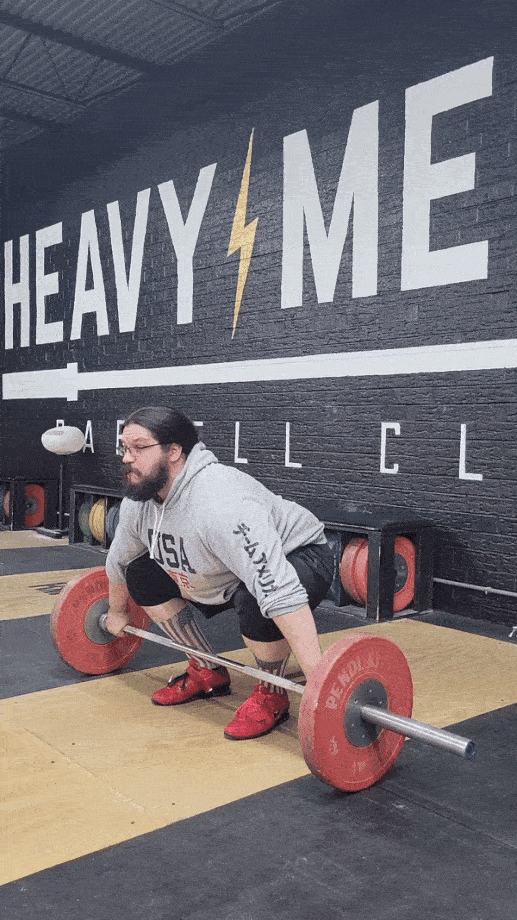
Snatch Pull to Knee
If positions are improper at the beginning of your snatch, it can throw the entire lift off. Snatch pulls to the knee are a variation of the snatch deadlift that focuses on proper position at the start (or liftoff).
To do a snatch pull to knee, you’ll perform a snatch grip deadlift, but pause and hold at knee level, making sure to keep your shoulders over the barbell, and engaging your upper back. (It’s easy to want to relax or shift into an easier position during the hold, but don’t.) After holding for a three-second count, lower the bar back to the starting position.
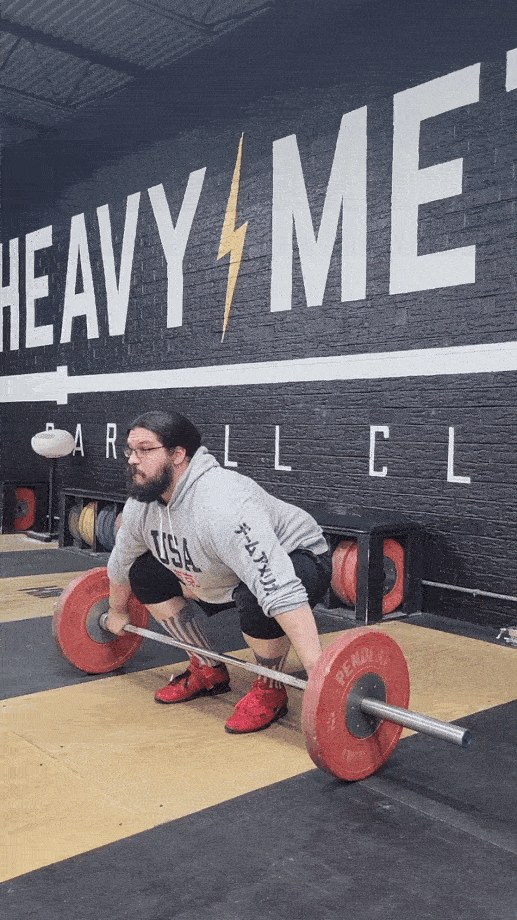
Three-Position Snatch Pulls
Three-position snatch pulls—or segmented pulls—have a similar goal to pulls to knee, in that you want to practice proper positioning during the pull. As the name implies, however, you’ll be practicing three different positions: liftoff (just off the floor), knee height, and the power position (at the hip crease).
For these, you’ll perform a snatch grip deadlift, but take short pauses, usually about a second, at each of the three positions. Through the lift, maintain a strong back, stay over the bar, and keep your chest up.
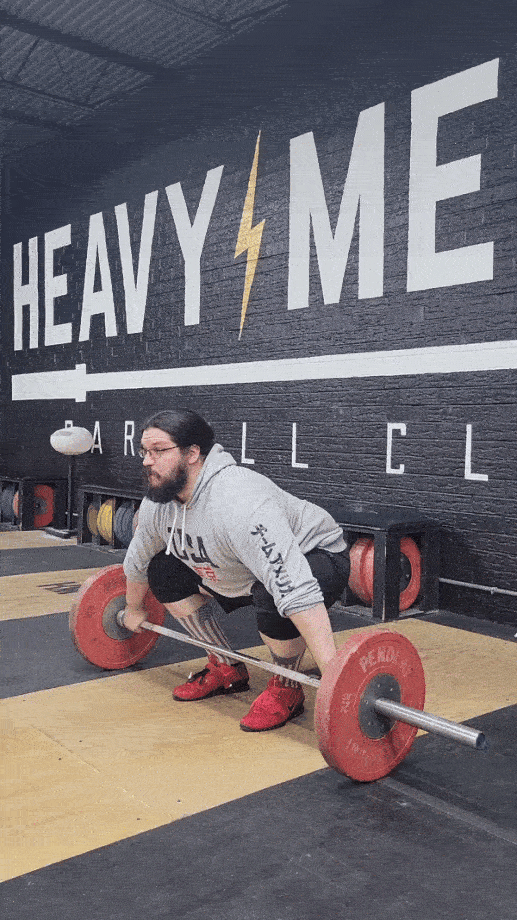
Floating Snatch Pulls
A floating snatch pull, also known as an elevator pull or even a yo-yo pull (lifts have creative names), is a set of snatch grip deadlifts or snatch pulls where the lifter never sets down the barbell. Instead, you’ll control the bar back to just a couple inches from the floor and perform the next repetition.
Along with maintaining proper positions with more time under tension, the floating snatch pull will also give your grip a workout, as you won’t get any sort of rest in between reps.
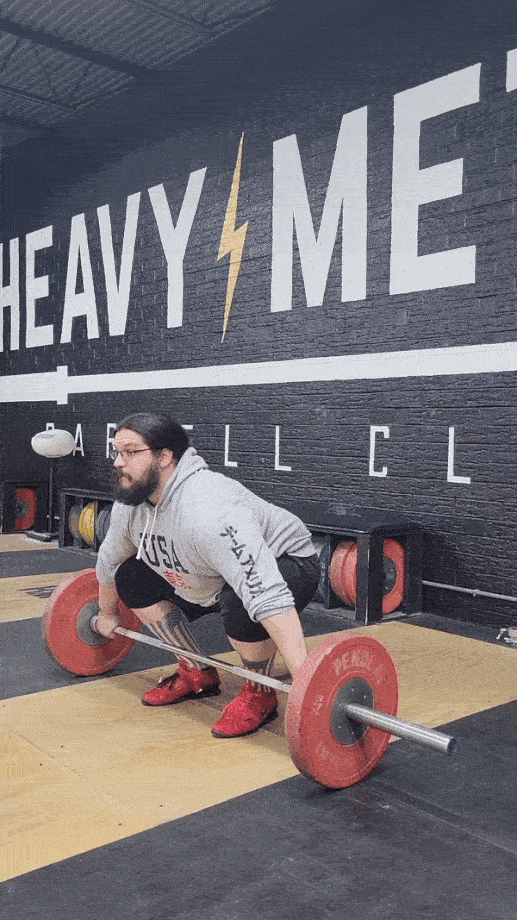
Snatch Grip Romanian Deadlifts
Romanian deadlifts, or RDLs, are performed to isolate the glutes and hamstring muscles, as the majority of the movement is from the hip hinge. With a snatch grip RDL, you’ll perform the same movement but with a wider grip.
RELATED: RDL Workout
For a snatch grip RDL:
- Begin standing holding the barbell, with your feet hip-width apart and a wide snatch grip on the bar.
- Lower the barbell by shifting your hips back and lowering your chest toward the floor.
- Continue to lower the weights until you feel a stretch in your hamstrings (probably around shin height for most), then drive the weight back up by raising your chest and firing your glutes and hamstrings.
- Repeat for reps.
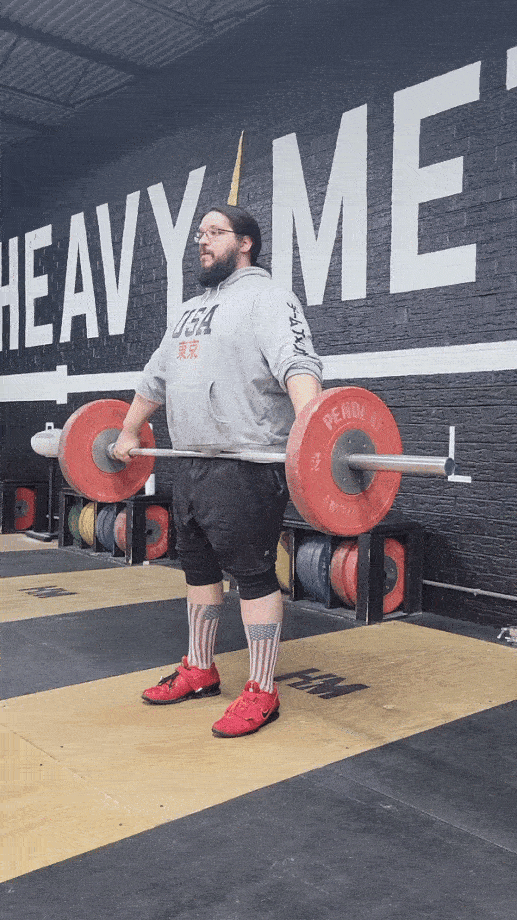
Snatch Deficit Deadlifts
With a deficit deadlift, the goal is to increase your range of motion by starting from a higher position than the barbell. This will also increase your time under tension, allowing for more of a workout.
These are done simply by starting your snatch grip deadlift while standing on a bumper plate or a raised platform. Because you’ll be starting with the barbell lower relative to you, your hips might start at a lower angle. Make sure to still maintain a braced, tight core in that lower position.
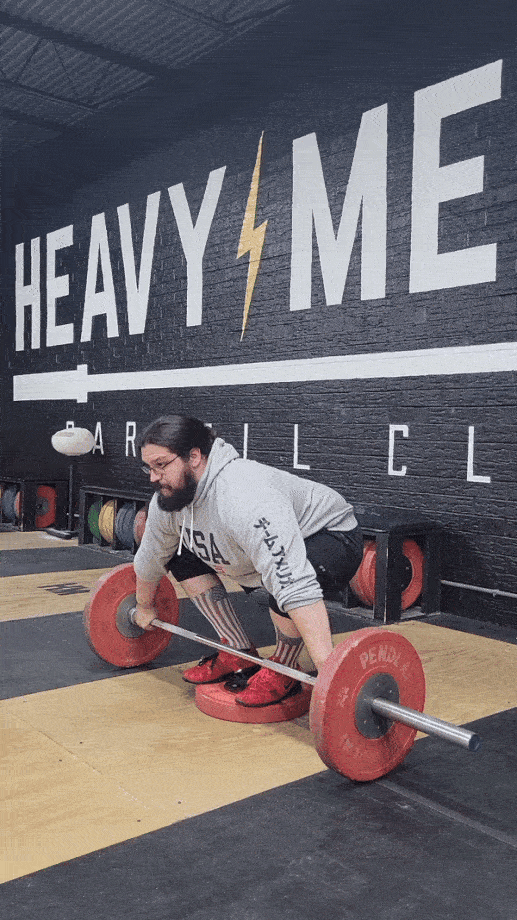
Snatch Block Pulls
Block pulls are great to get a workout in for lifters wanting to emphasize a sticking point, or for anyone dealing with a back injury. Performing a snatch deadlift off blocks or from a rack cuts the movement down to the part of the lift you want to focus on, or it helps avoid a lower part of the deadlift that might aggravate an injury. Racks and blocks can be adjusted for any height you want as well, so they can account for any position of the deadlift you want to work on.
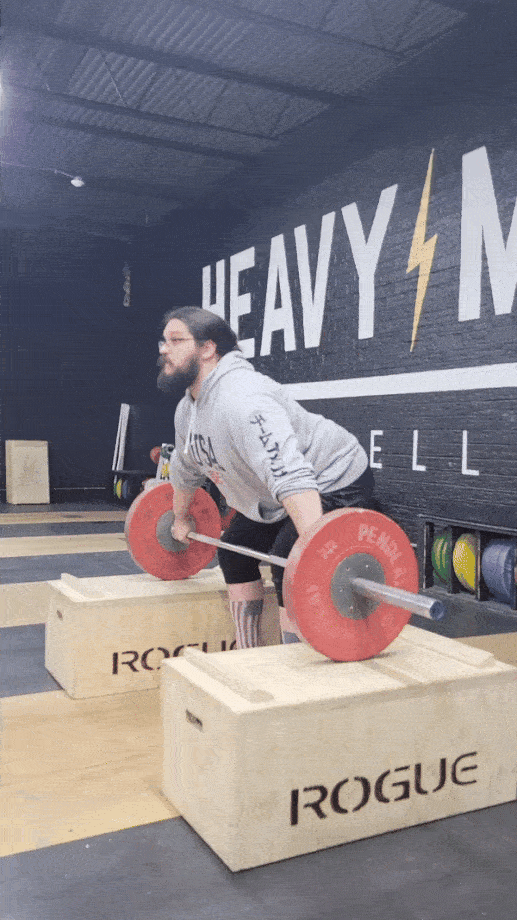
How to Program the Snatch Grip Deadlift
Deadlifts are typically a heavier movement, so I will program them for my weightlifting athletes toward the end of the workout, after more dynamic movements like the snatch and clean and jerk. However, if your workout is solely focused on strength, then the snatch grip deadlift can be your first or second movement, or your main focus for the day. I wouldn’t think of them as a warm-up for your workout, though.
If you’d like to add snatch grip deadlifts to your training regimen, the main advice I’d give is to start light and progressively add a heavier load as you hone in on technique.
RELATED: What Is Progressive Overload?
A good baseline for snatch grip deadlift workouts is:
- For building strength, try 5 sets of 3 to 5 repetitions at a heavy weight, about 80% or more of your one-rep max.
- For hypertrophy and building muscle, 3 or 4 sets of 8 to 10 reps will work, done at a lighter weight.
These repetitions and sets can be adjusted for more variety and for your goals. Also, talk with a personal trainer or coach if you’re unsure about programming.
Who Should Do Snatch Grip Deadlifts
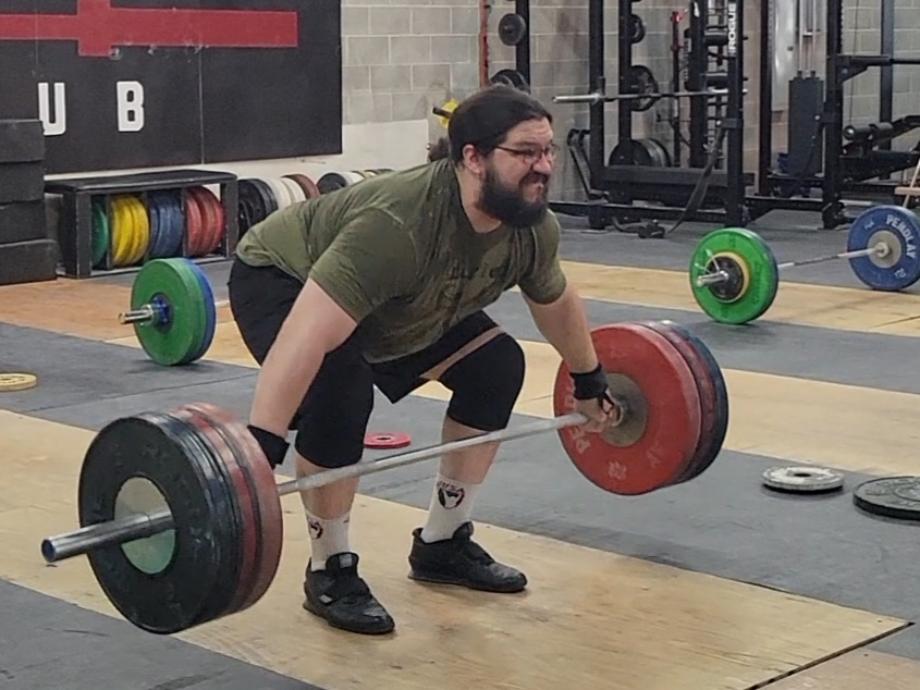
Just like a pair of the best weightlifting shoes, snatch grip deadlifts can help most everybody, but here are a few people that will get great benefit out of this exercise:
- Olympic weightlifters: Obviously, training the snatch grip deadlift will have carryover to the proper positions of the snatch pull and snatch. Speaking from experience, for those training and competing in the Olympic lifts, snatch deadlifts and pulls are vital to build grip strength, upper back strength, and refine technique.
- Power athletes: The snatch deadlift isn’t only for Olympic lifters like me. Powerlifters, CrossFit athletes, and strongman competitors can get massive benefits from snatch grip deadlifts, particularly in building grip and upper back strength.
- General gym users: If you train at a commercial gym or at a home gym, there’s a good chance you’re already deadlifting. However, the same deadlift can become tiring. Snatch grip deadlifts can be a great way to change up your programming to add variety, making workouts less routine and giving the body a different stimulus thus helping improve muscle adaptation.
Snatch Grip Deadlift: FAQs
Are snatch grip deadlifts easier or harder than conventional deadlifts?
Both conventional and snatch grip deadlifts can be challenging, so I think it’s better to say that the lifts are different. The snatch grip deadlift can be more challenging, as the wider grip will require more grip strength and also attack the upper back muscles more so than a conventional deadlift. However, a conventional deadlift can be performed with more weight, making it a challenging movement in its own right.
What muscles does the snatch grip deadlift target?
The snatch grip deadlift is a full-body exercise, using both lower body muscles in the posterior chain (glutes and hamstrings), abdominal muscles in the core, and back muscles (notably the lats). However, the snatch grip on this exercise will utilize more grip and upper back muscles—like the rhomboids and spinal erectors—than your typical deadlift.
How do I find a grip width for a snatch grip deadlift?
To find your proper snatch grip, the barbell should be at the hip crease while standing, where the bar would ideally make contact in a full snatch. So, while standing, grab a barbell and move the grip out until the bar rests at the hip crease or where the hips fold when bending forward. You can make minor adjustments based on preference from here, but this will be a good starting point for most people.
References
- Yanagisawa O, Oshikawa T, Matsunaga N, Adachi G, Kaneoka K. Acute Physiological Response of Lumbar Intervertebral Discs to High-load Deadlift Exercise. Magn Reson Med Sci. 2021 Sep 1;20(3):290-294. doi: 10.2463/mrms.mp.2020-0052. Epub 2020 Sep 1. PMID: 32879259; PMCID: PMC8424024.


